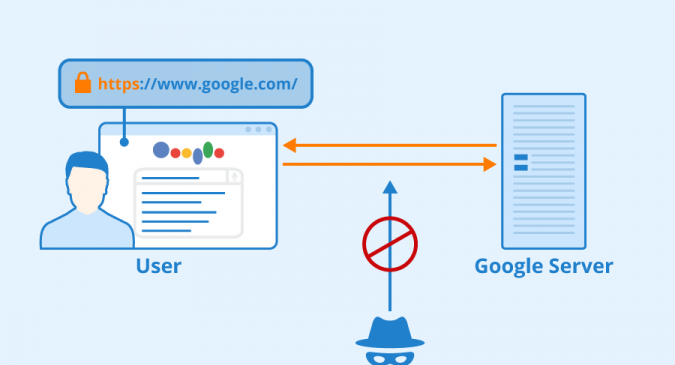Last reviewed: December 1st, 2023.
In the contemporary digital landscape, protecting customer data goes well beyond ethical duty, forming the bedrock of business credibility and sustained success. The widespread belief that updated network security measures, including antivirus software and firewalls, offer comprehensive protection for personally identifiable information (PII) fails to recognize the intricate challenges of data security. Exploring and adopting the eight crucial facets of an effective data protection strategy is vital to confront this misconception.
A multifaceted approach to protecting customer data must transcend traditional network defenses. This includes implementing specialized network safety mechanisms and secure cloud storage solutions with solid encryption protocols that keep data safe until it is decrypted at the user’s terminal, thereby mitigating the risk of penetration attacks. Additionally, employing distributed network security services that isolate customer data streams enhances security by ensuring that the data traffic for each customer is securely segregated from others.
Addressing the vulnerabilities in existing internal control systems also plays a significant role in protecting customer data. This can be achieved through consistent training and awareness initiatives, strict hiring practices, and the incorporation of cutting-edge technology to prevent data breaches (Abidin et al., 2019). Innovative technologies such as managing terminal data access behaviors, secure interactions during cross-domain data transfers, and differentiated data privacy protections are pivotal in mitigating security risks (Huang et al., 2021).
To reiterate, relying solely on current network security practices to safeguard PII is a misconception. It is time to debunk this myth and delve deeply into the multifaceted and critical dimensions required to protect customer data effectively to foster innovations and provide a holistic insight into the multidimensional global landscape.
The Eight Critical Dimensions of Protecting Customer Data
1. Data Encryption: The First Line of Defense
Encrypting data, both at rest and in transit, is fundamental. Encryption renders it unreadable to unauthorized parties in the unfortunate event of data interception. This ensures that the confidentiality of customer information is maintained under all circumstances.
2. Access Control: Gatekeeping Your Data
Implementing stringent access controls is imperative. This involves robust authentication methods and meticulous management of access privileges, ensuring only authorized personnel can access sensitive information. It’s about knowing who can access what and maintaining a tight ship.
3. Regular Audits and Compliance Checks: Staying on Track
Consistent auditing of data security practices and adherence to data protection regulations like GDPR or HIPAA is a legal necessity and a strategic approach to identifying and rectifying potential vulnerabilities in your data protection strategy.
4. Employee Training and Awareness: Your Human Firewall
Employees can either be your weakest link or your first line of defense. Training and awareness programs on data security, threat recognition, and best practices for handling PII are crucial in building a knowledgeable and vigilant workforce.
5. Physical Security Measures: Beyond the Digital Realm
The digital protection of data is just one side of the coin. Ensuring the physical security of servers and data centers through surveillance and restricted access is equally important to safeguard against physical breaches.
6. Data Minimization and Retention Policies: Less is More
Minimizing the amount of PII collected and stored significantly reduces the risk associated with data breaches. Clear data retention policies ensure that data is not held longer than necessary, limiting exposure.
7. Secure Disposal of Data: The Art of Letting Go
Once PII is no longer needed, its secure disposal is crucial. This includes procedures for the safe destruction of physical records and secure deletion of electronic files, leaving no trace of sensitive information behind.
8. Incident Response Plan: Preparing for the Inevitable
A robust incident response plan prepares your organization to address data breaches quickly and effectively, minimizing the impact on your customers’ PII and your company’s reputation.
Conclusion
In conclusion, protecting customer PII is a complex task beyond network security. It requires a holistic approach encompassing a range of strategies, from data encryption to a well-prepared incident response plan. By implementing these multifaceted security measures, companies can ensure the integrity and confidentiality of their customer’s data, fostering trust and maintaining their reputation in the digital world.
Sources
Abidin, M. A. Z., Nawawi, A., & Salin, A. S. A. P. (2019). Customer data security and theft: A Malaysian organization’s experience. Information & Computer Security, 27(1), 81–100. https://doi.org/10.1108/ICS-04-2018-0043
Huang, X., Shi, C., Guo, Q., Gao, X., & Yu, P. (2021). Key Technology and Application of Customer Data Security Prevention and Control in Public Service Enterprises. In Q. Liu, X. Liu, T. Shen, & X. Qiu (Eds.), The 10th International Conference on Computer Engineering and Networks (Vol. 1274, pp. 927–933). Springer Singapore. https://doi.org/10.1007/978-981-15-8462-6_107

